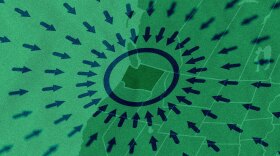The idea of putting a needle of adrenaline into someone might seem intimidating – but that’s how you save their life if they’re in allergic shock. The legislature is considering empowering school staff to give injections more widely.
Last year, a girl in Virginia died after eating a peanut given to her by a friend. She could have been saved with a shot of epinephrine, which is another name for adrenaline. But, because the epinephrine injectors (sometimes called EpiPens, a common brand) are a prescription medication, they can only be given to a child whose name is on the syringe. The girl didn't have a prescription.
Allergy doctors and families are pushing to amend Washington law, as several other states have done, and allow school staff to give the shots to anyone who is having a severe allergic reaction.
Teachers and staff, through their labor unions, are worried they’re being asked to make a medical diagnosis in a moment of crisis. so they testified against the bill in a Senate committee.
But allergy doctor Kevin Dooms, who practices in Bellevue and is promoting Senate Bill-5104, says epinephrine is safe and easy to use.
'The side effects are minimal, and shouldn’t be something that scares people from using epinephrine," says Dooms. "They should use it --and ask questions later."
SB5104 would give school staff legal immunity, mostly as a reassurance. The main danger is for people who have a heart condition, as epinephrine speeds up the heart-rate.
Doctors envision a day when epinephrine needles could be available in public, just like automatic defibrillators.
- - -
This promotional video shows how the EpiPen version of epinephrine works:
http://youtu.be/pgvnt8YA7r8?t=38s







